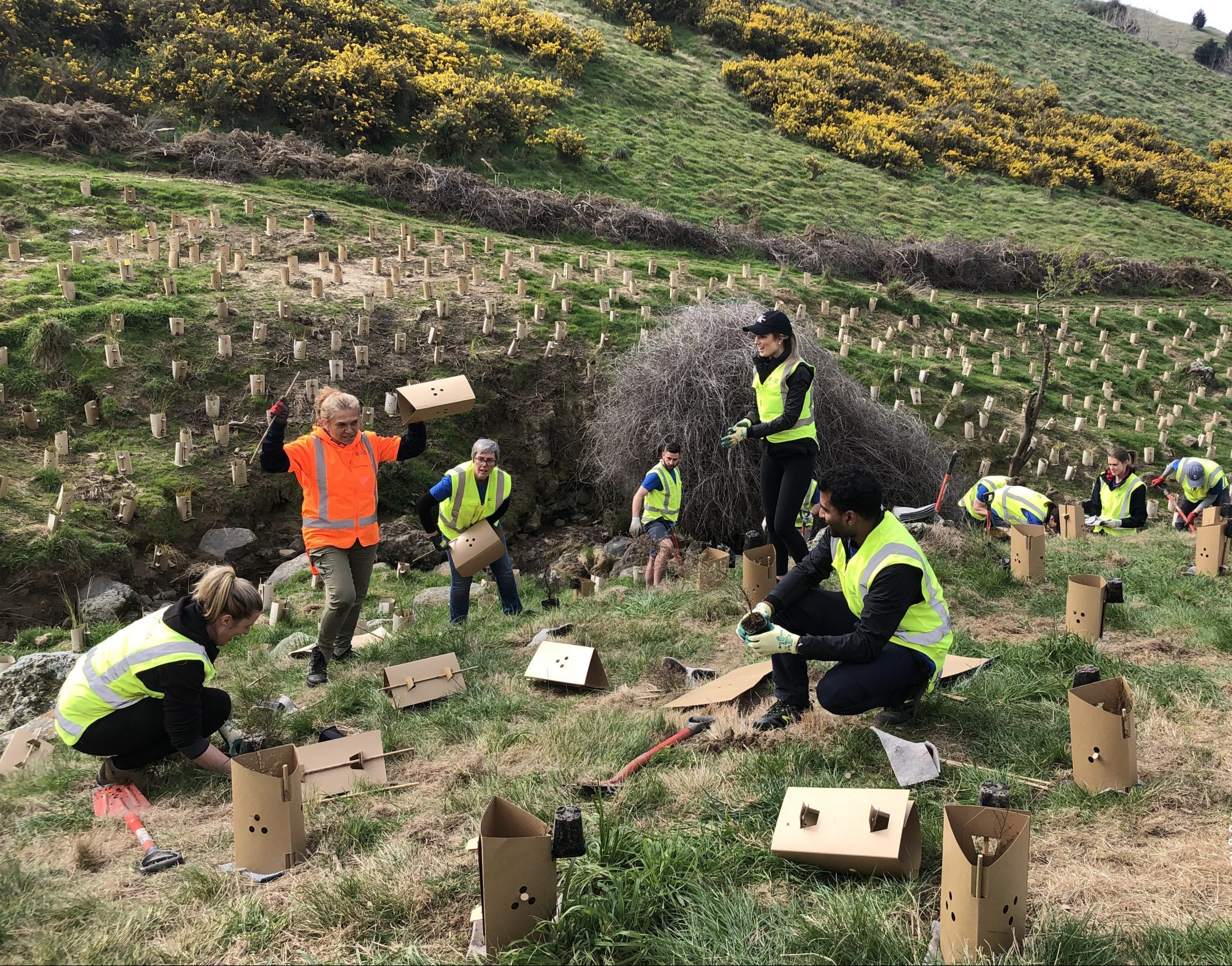KAIMAHI FOR NATURE – WHAKARAUPŌ HARBOUR
1 July 2021 to 30 June 2024
“He Rau Ringa e Oti Ai”- Helping Hands Programme is a partnership between Te hapū o Ngāti Wheke, Living Springs and Conservation Volunteers New Zealand.
The Helping Hands Programme involves a fusion of values, competencies, knowledge, worldviews and experience to deliver ecological restoration through activities such as planting (riparian, infill, plant maintenance and reforestation), predator control (possums, mustelids & rats) and invasive pest plant management, fence maintenance and track maintenance.
Ecological and cultural restoration of Whakaraupō as mahinga kai is essential to ensure healthy, abundant, interconnected and sustainable life, waterways and communities. The Helping Hands partnership is closely aligned to the Whaka-Ora Healthy Harbour partnership and Catchment Plan.
The programme primarily covers three main project sites:
– Rāpaki 1A and 2B Māori Reserve,
– Taukahara Rāpaki 1C Māori Reserve
– Living Springs
Field teams receive full training and support services. A two-way educational pathway exists between mana whenua, the programme partners and the field teams. Ecological expertise passes from the programme partners to mana whenua and the field teams and matauranga Māori will flow from mana whenua to the field teams and programme partners. There is a multi-faceted educational approach.
Wrapped around the three partners, are a rōpū of six supporting parties including:
- – Whaka-Ora Healthy Harbour partnership
- – Rod Donald Banks Peninsula Trust
- – Banks Peninsula Conservation Trust
- – Orton Bradley Park
- – Ōtamahua/ Quail Island Ecological Restoration Trust
- – Summit Road Society
The restoration work focuses primarily on plant and animal pest control but also includes native planting and track and fence maintenance. In the first year of the project, the Kaimahi team in Rāpaki have successfully planted approx. 12,000 native plants on Māori Reserve 1A2B and controlled animal pests on 180 hectares of land.

